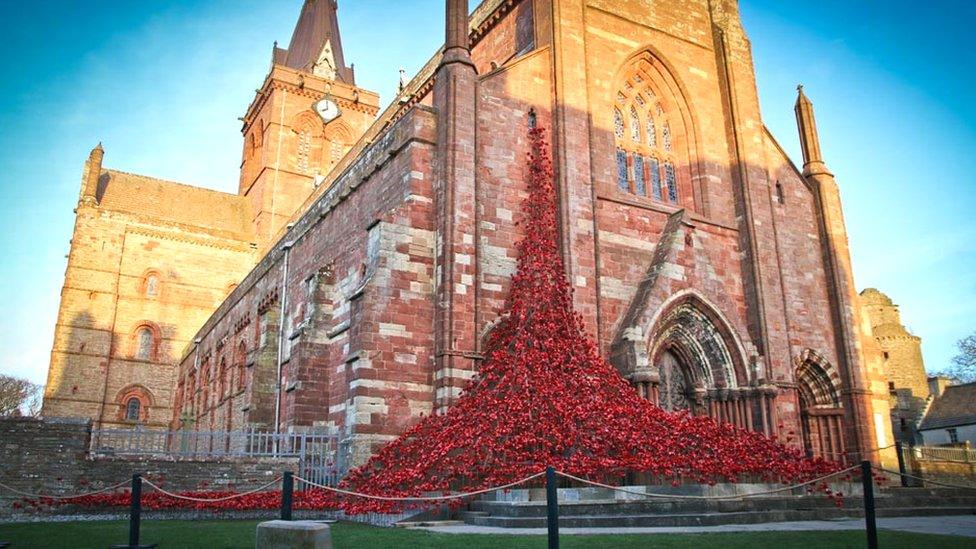Recording 900 years of graffiti in Orkney's cathedral
- Published
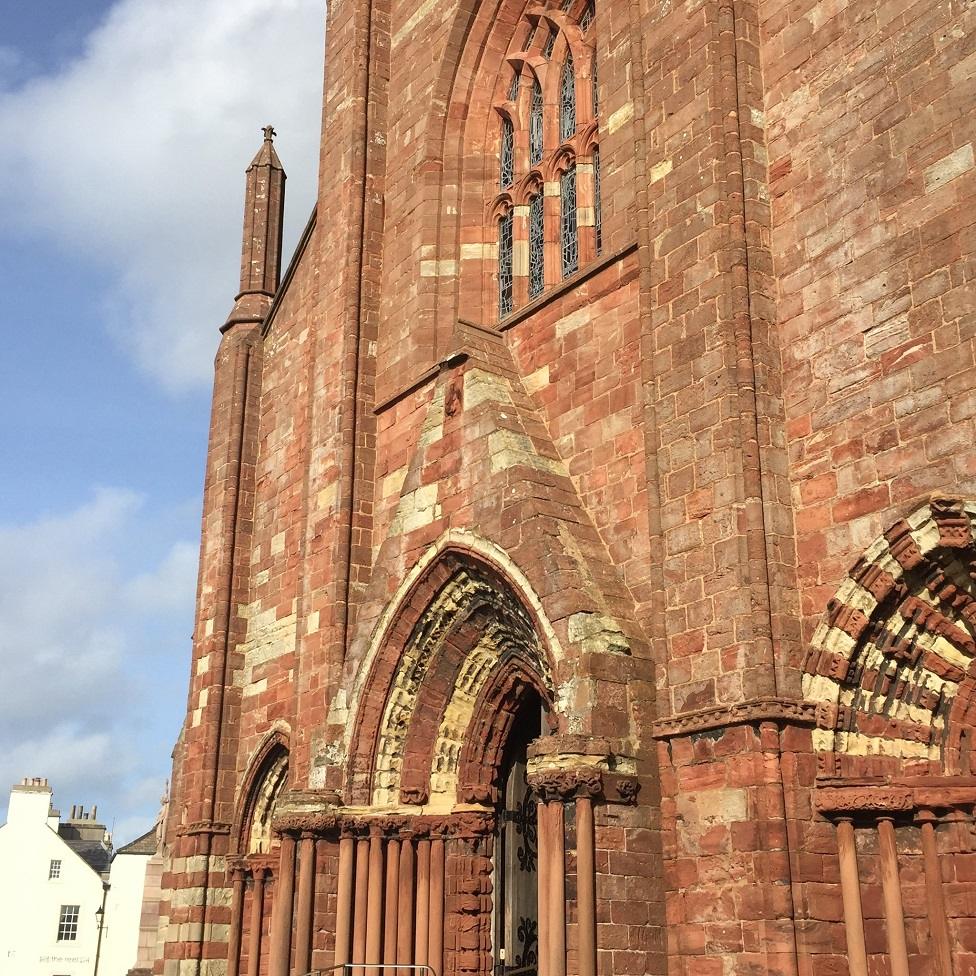
St Magnus is a pink cathedral built by the Vikings in Orkney
St Magnus Cathedral is a giant pink building which dominates the centre of Kirkwall.
It is a much loved building, at the centre of church and community events.
But for almost 900 years, people have been expressing their affection for the place by literally leaving their mark there.
Now Orkney Archaeology Society is training up volunteers to make the first full record of all the graffiti in the building.
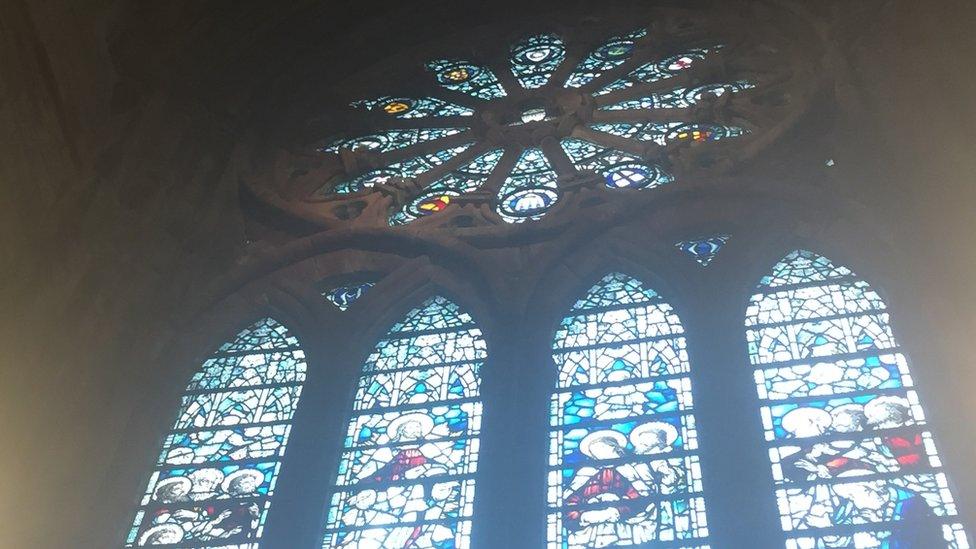
The east window of the cathedral features carved stonework
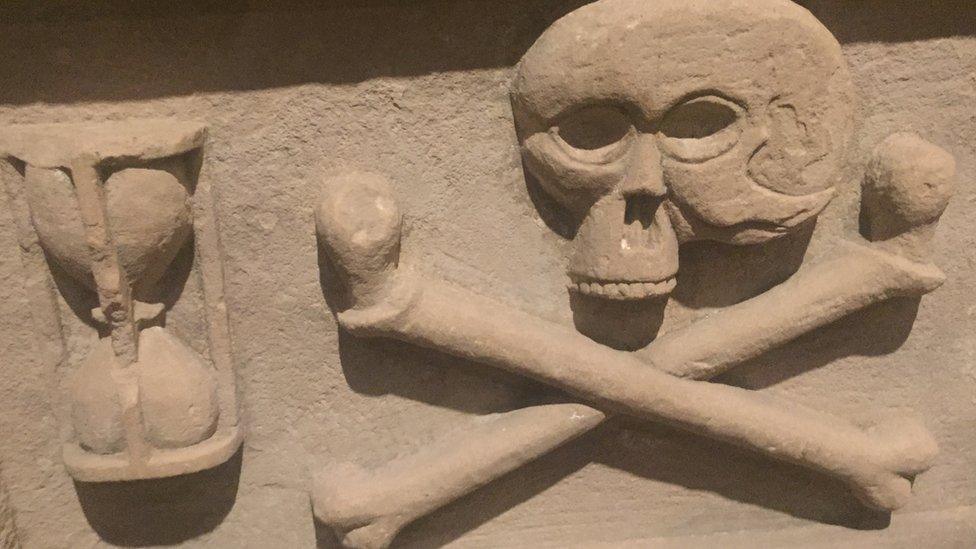
Memorials lining the nave include grotesque reminders of death and decay
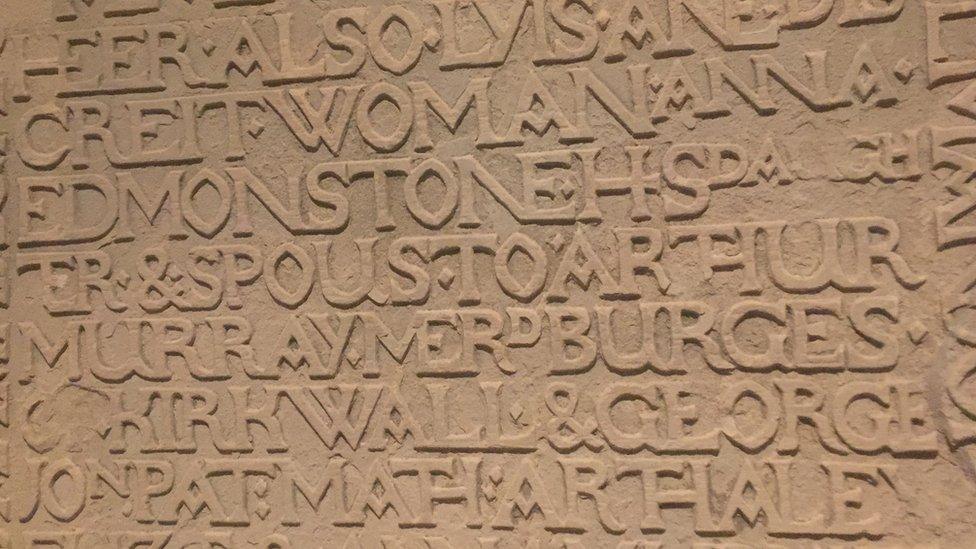
Inscriptions like this are what you might expect to see in a church or cathedral
There are spectacular carvings in the cathedral that are supposed to be there - from the detail of stonework in the stained glass windows, to the inscriptions and grave markers in the nave.
But it is now becoming clear that there are hundreds - maybe thousands - of much more informal marks, which have been left in the fabric of the building over centuries.
It is a tradition which started with the stone masons who built it, and who cut their symbols into the blocks of stone they carved.
And it continued through the 19th Century and until World War Two when sailors based in Scapa Flow scrawled their names, and the names of the ships they served on, on to masonry in the galleries and upper levels of the building.
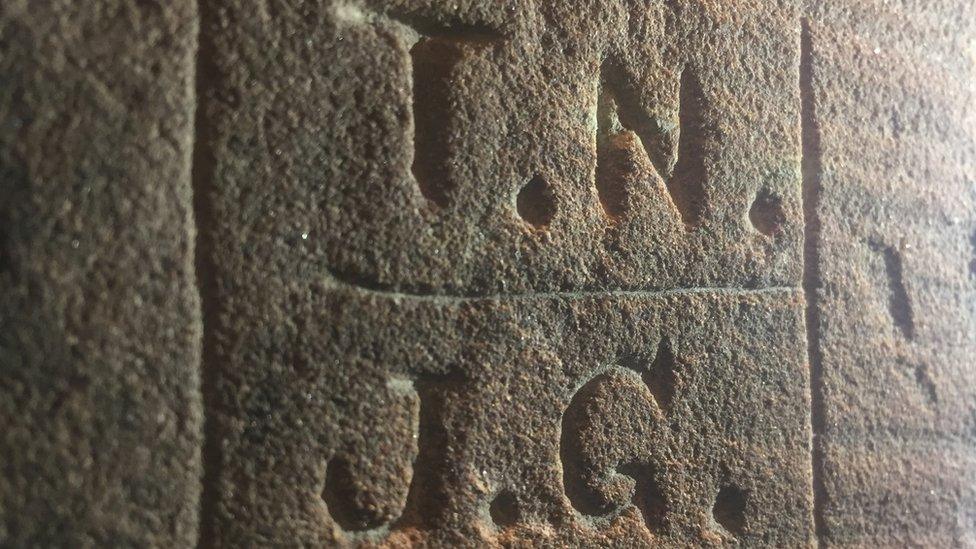
Some of the graffiti is easy to spot, and carved with great skill

Other carvings become visible if you shine a torch onto them, or they are caught in a beam of sunlight

This pencil note, in the choir, seems to record the position of a grave - seven feet from the pillar and two feet four inches deep
Examples of graffiti which are already known about - but which have not been fully recorded - include a carved circle, thought to be a charm to protect from harm; peoples' initials; and a pencil note on a pillar in the Choir which appears to record the position of a grave.
The plan now is for archaeologists from the University of the Highlands and Islands in Orkney to train volunteers with the skills to find and note down every piece of graffiti in the building.
It is hoped that it might be possible to publish a record of them - either as a book, or as an online resource.
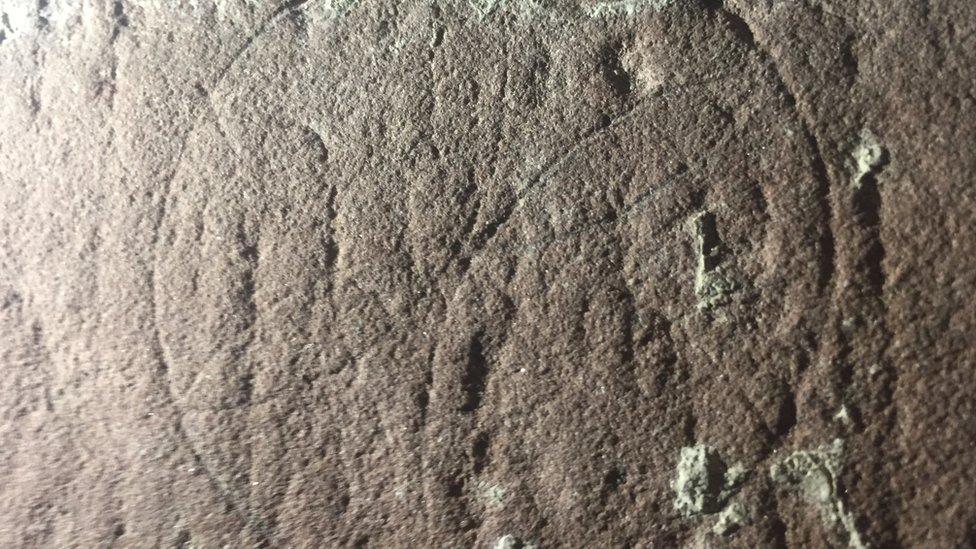
This carefully carved circle featuring six petal shapes is thought to be a medieval charm
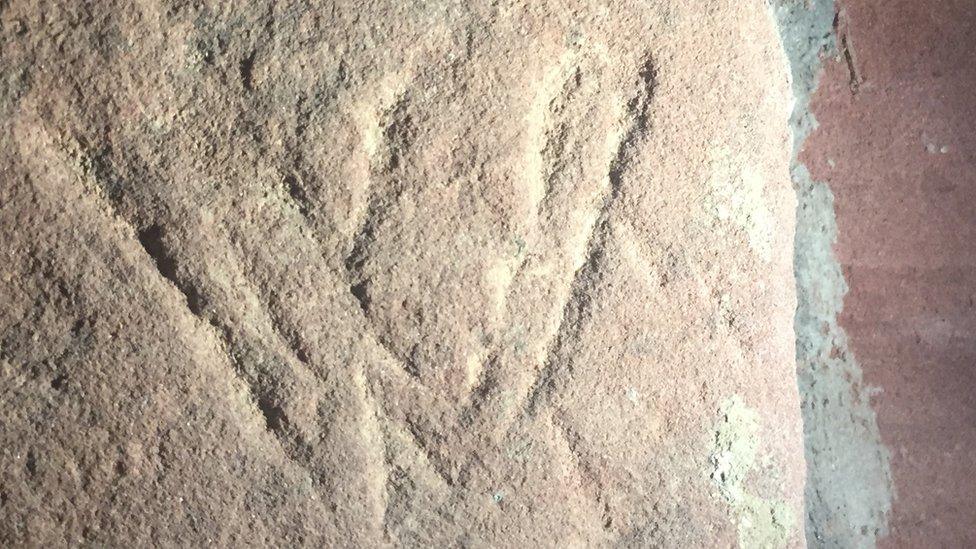
Double V carvings like this are quite common in medieval church buildings, and are thought to refer to the Virgin Mary

Attempts by the authorities to stop people leaving graffiti have not been successful
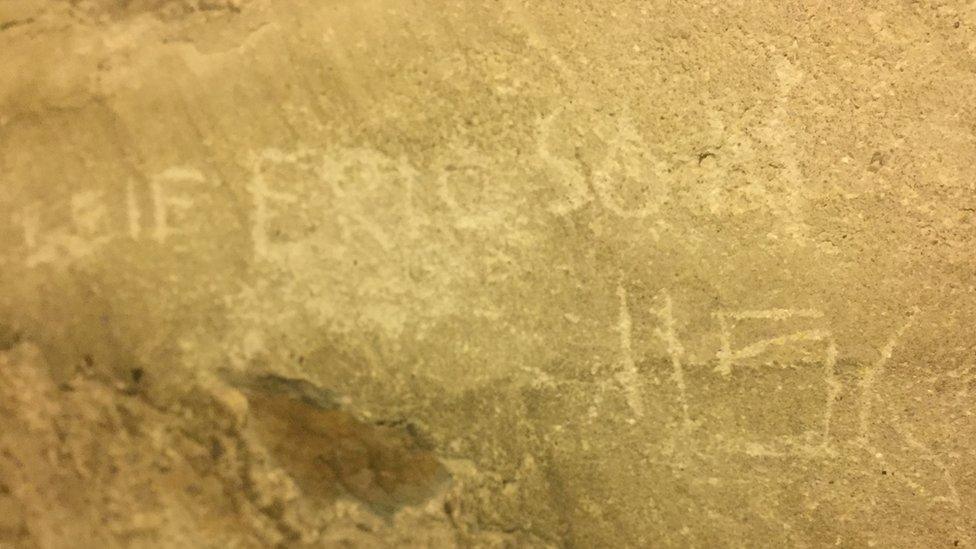
Not all the graffiti in the building is what it claims to be. This inscription says it was left by Leif Ericson in the year 1156. Experts think it almost certainly wasn't.
- Published14 November 2018
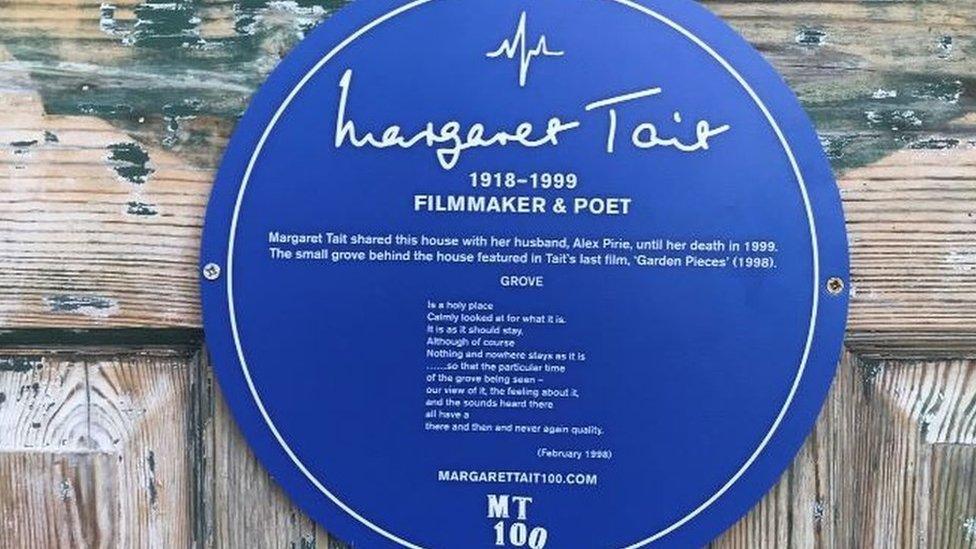
- Published30 July 2017
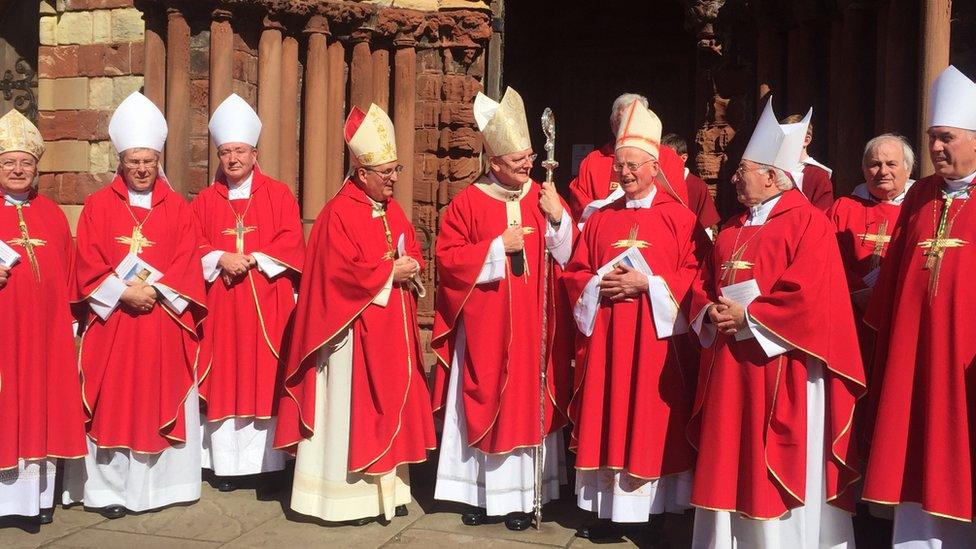
- Published22 April 2016
